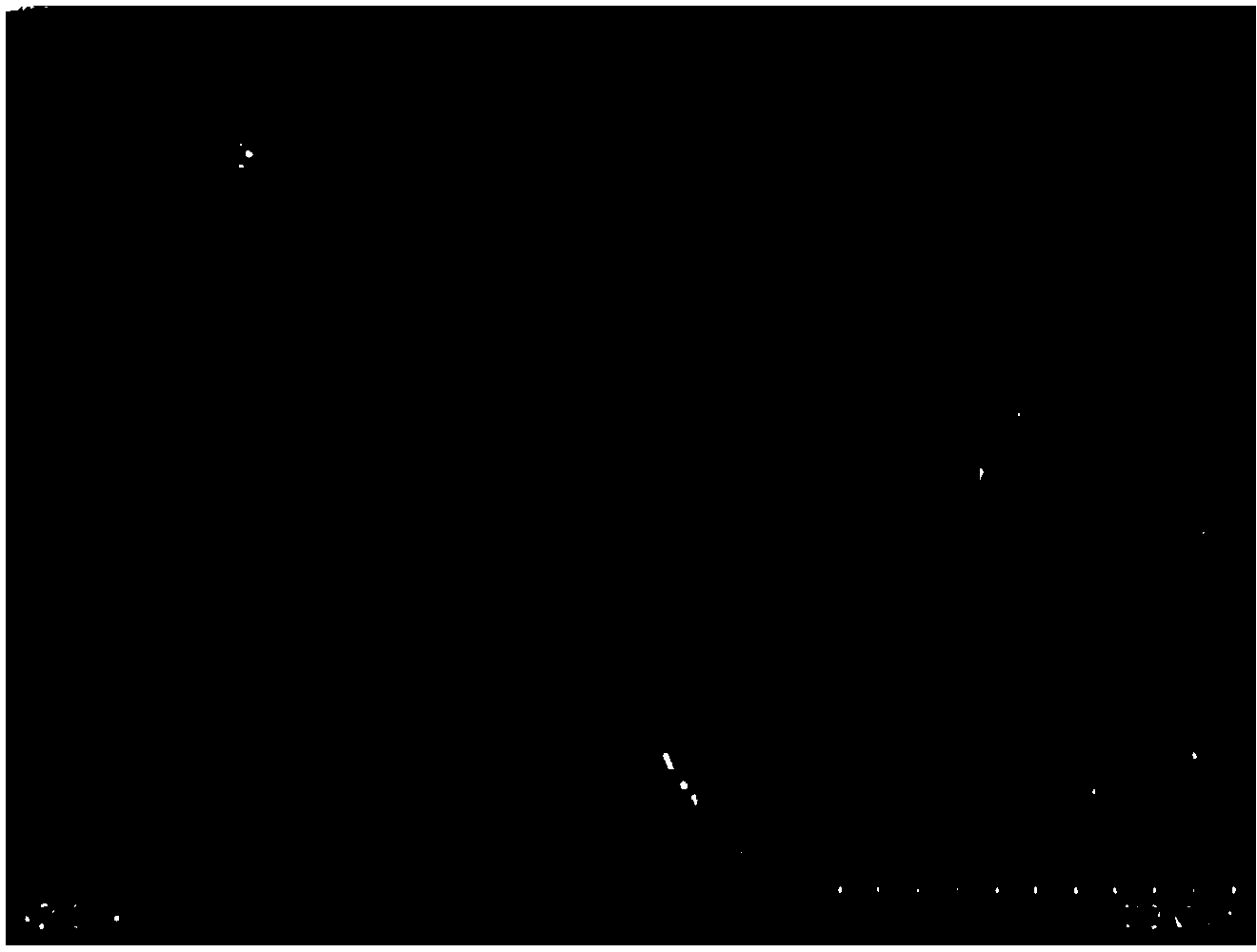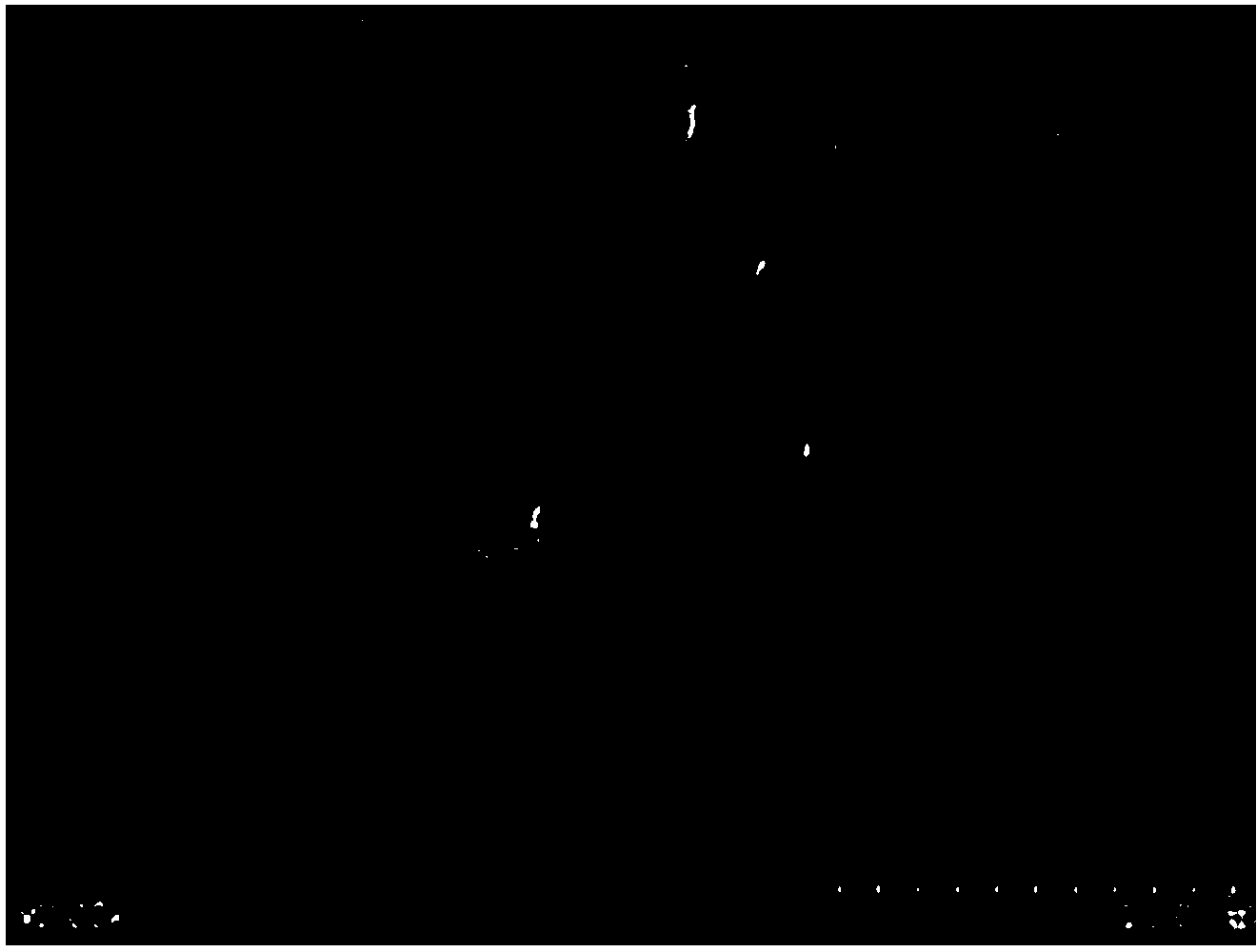Method for preparing yttria of different sizes and different appearances
A technology of yttrium oxide and morphology, applied in chemical instruments and methods, inorganic chemistry, rare earth metal compounds, etc., can solve the problems of difficult control of the production process, easy agglomeration of powders, ammonia wastewater treatment, etc., and achieve easy filtration, washing, and operation The effect of simplicity and easy production process
- Summary
- Abstract
- Description
- Claims
- Application Information
AI Technical Summary
Problems solved by technology
Method used
Image
Examples
Embodiment 1
[0020] Prepare 400 ml of yttrium chloride solution with a concentration of 0.5 mol / L and an acidity of 0.5 mol / L; at the same time, prepare 150 ml of an oxalic acid solution with a concentration of 380 g / L. Take 200ml of deionized water in a 2L beaker, start stirring, and flow the yttrium chloride solution and the oxalic acid solution into the beaker, and the reaction is completed within 4 minutes. After the reaction, heat and distill in a water bath at 100°C until the mother liquor is completely evaporated to dryness to produce yttrium oxalate. Filter and wash, rinse 5-8 times with deionized water, and then drain. Burn in an atmosphere furnace at 850°C, keep the temperature for 1.5 hours, and cool to room temperature to obtain yttrium oxide. Detect D50 and electron microscope, D50=19.75 microns, the shape is cubic, see figure 1 .
Embodiment 2
[0022] Prepare 400ml of yttrium chloride solution with a concentration of 1mol / L and an acidity of 3mol / L; meanwhile prepare 250ml of an oxalic acid solution with a concentration of 380g / L. Take 200ml of deionized water in a 2L beaker, start stirring, and flow the yttrium chloride solution and the oxalic acid solution into the beaker, and the reaction is completed within 10 minutes. After the reaction, heat and distill in a water bath at 100°C until the mother liquor is completely evaporated to dryness to produce yttrium oxalate. Filter and wash, rinse 5-8 times with deionized water, and then drain. Burn in an atmosphere furnace at 850°C, keep the temperature for 1.5 hours, and cool to room temperature to obtain yttrium oxide. Detect D50 and electron microscope, D50=31.11 micron, appearance is flake, see figure 2 .
Embodiment 3
[0024] Prepare 400ml of yttrium chloride solution with a concentration of 0.5mol / L and an acidity of 3mol / L; at the same time prepare 400ml of an oxalic acid solution with a concentration of 120g / L. Take 200ml of deionized water in a 2L beaker, start stirring, and flow the yttrium chloride solution and the oxalic acid solution into the beaker, and the reaction is completed within 10 minutes. After the reaction, heat and distill in a water bath at 100°C until the mother liquor is completely evaporated to dryness to produce yttrium oxalate, which is filtered and washed, rinsed with deionized water for 5-8 times, and then drained. Burn in an atmosphere furnace at 850°C, keep the temperature for 1.5 hours, and cool to room temperature to obtain yttrium oxide. Detect D50 and electron microscope. D50=12.04 microns, the morphology is a coexistence of cube and sheet, see image 3 .
PUM
 Login to View More
Login to View More Abstract
Description
Claims
Application Information
 Login to View More
Login to View More - R&D
- Intellectual Property
- Life Sciences
- Materials
- Tech Scout
- Unparalleled Data Quality
- Higher Quality Content
- 60% Fewer Hallucinations
Browse by: Latest US Patents, China's latest patents, Technical Efficacy Thesaurus, Application Domain, Technology Topic, Popular Technical Reports.
© 2025 PatSnap. All rights reserved.Legal|Privacy policy|Modern Slavery Act Transparency Statement|Sitemap|About US| Contact US: help@patsnap.com



